site search
online catalog
IDENTIFIED 3rd NEW YORK CAVALRY SHARPS AND HANKINS CAVALRY MODEL CARBINE

Hover to zoom

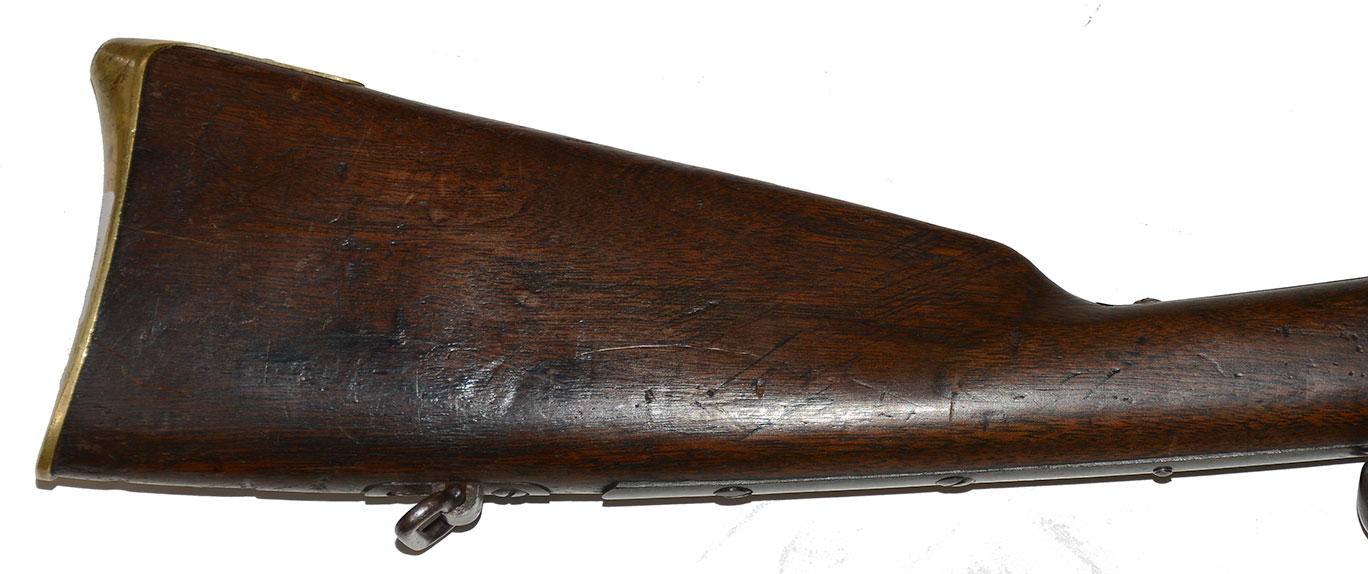


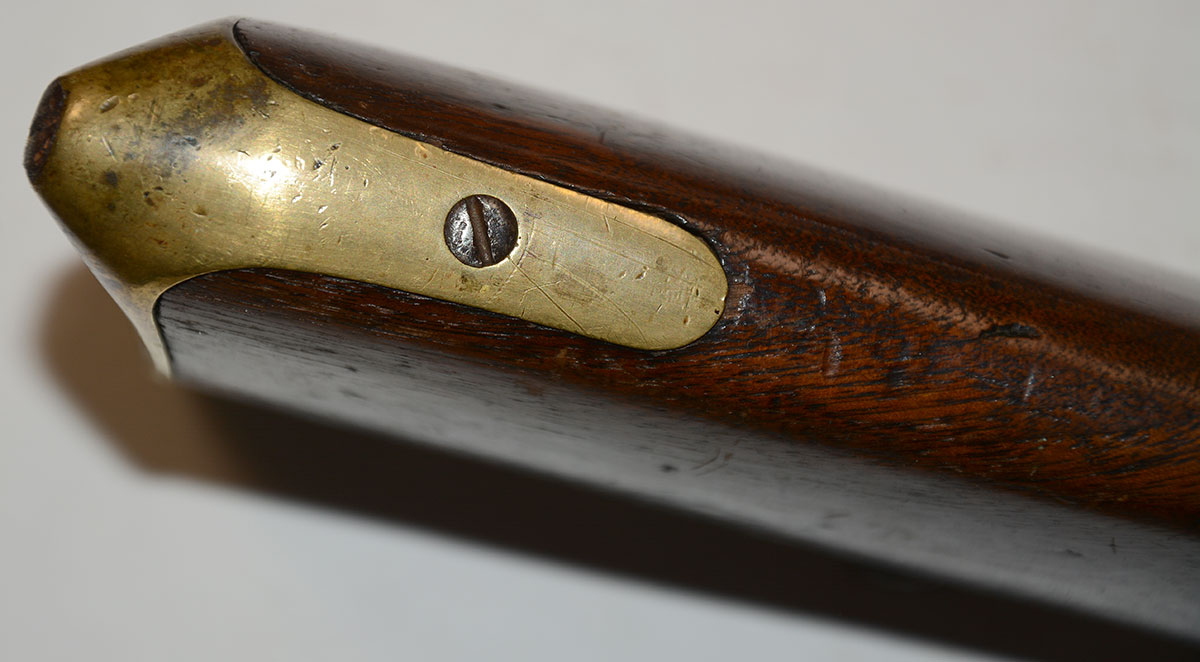
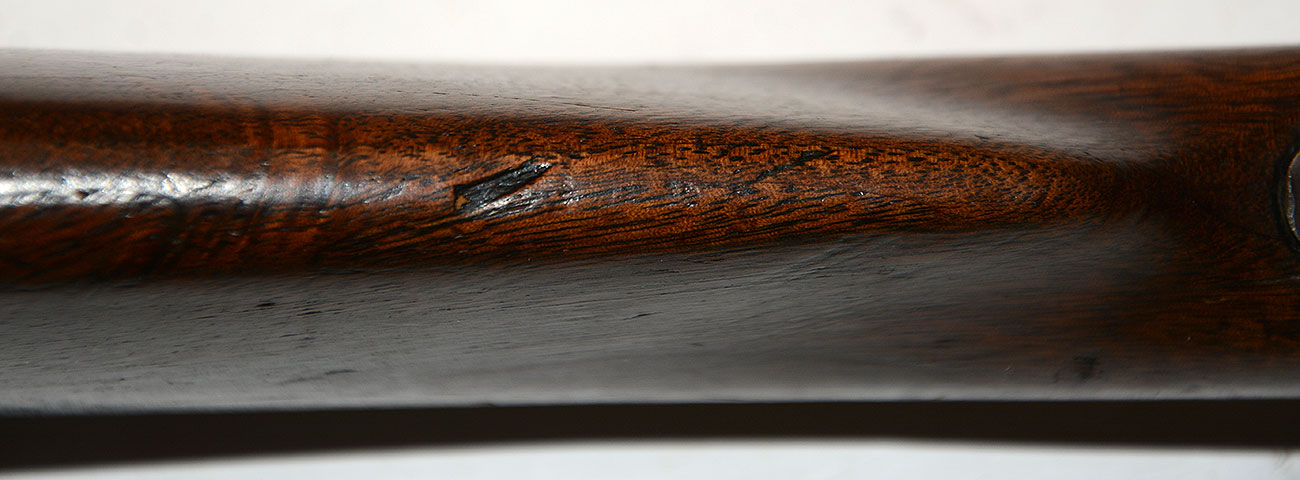
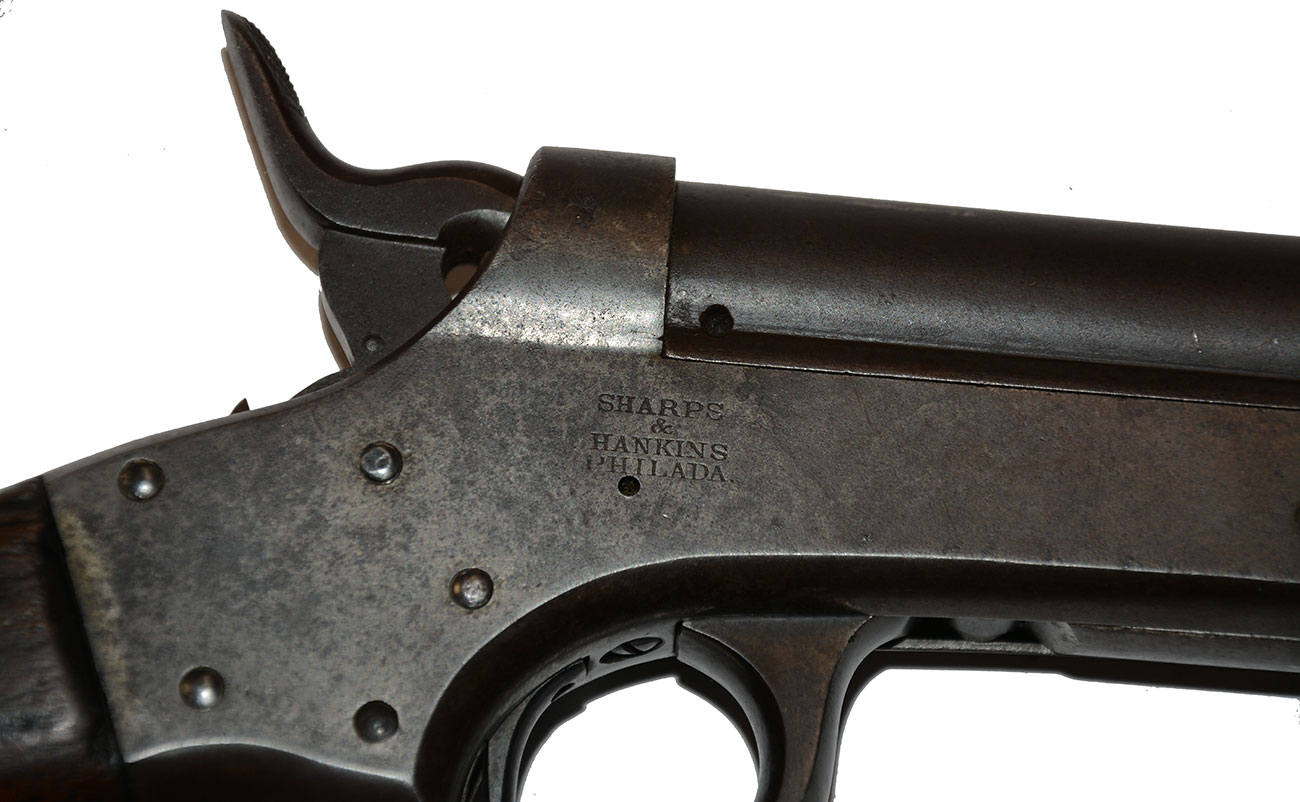

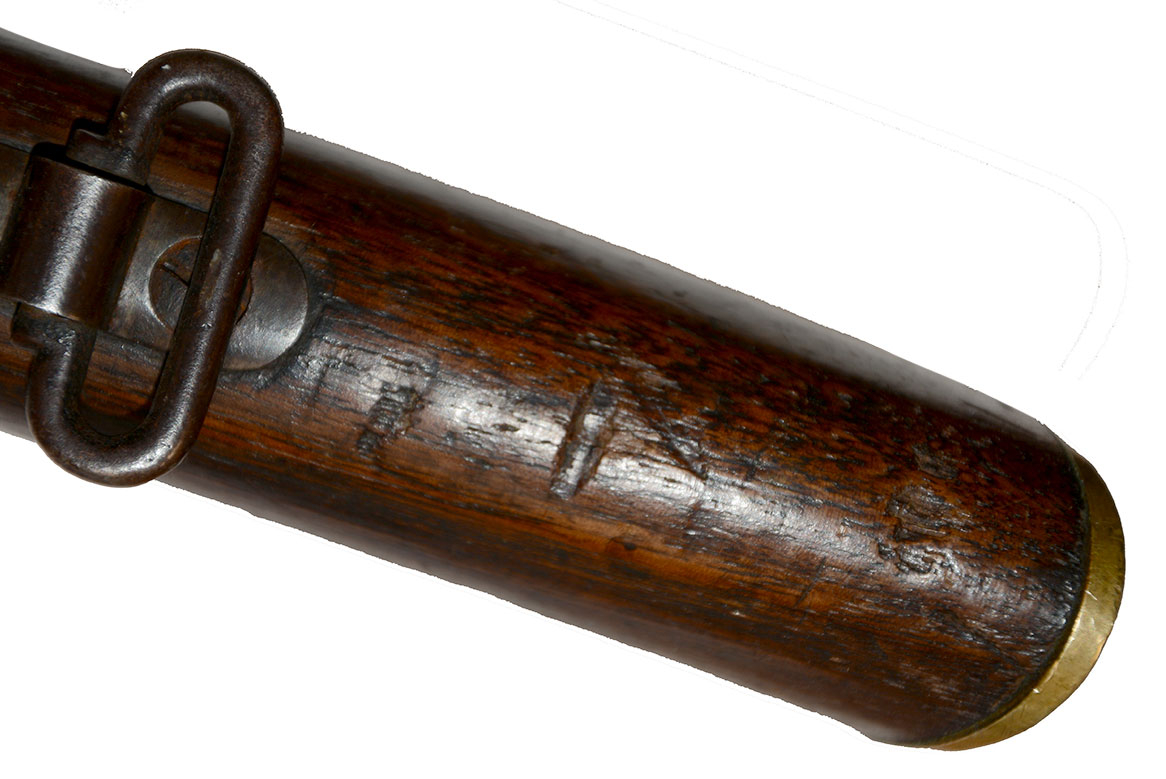

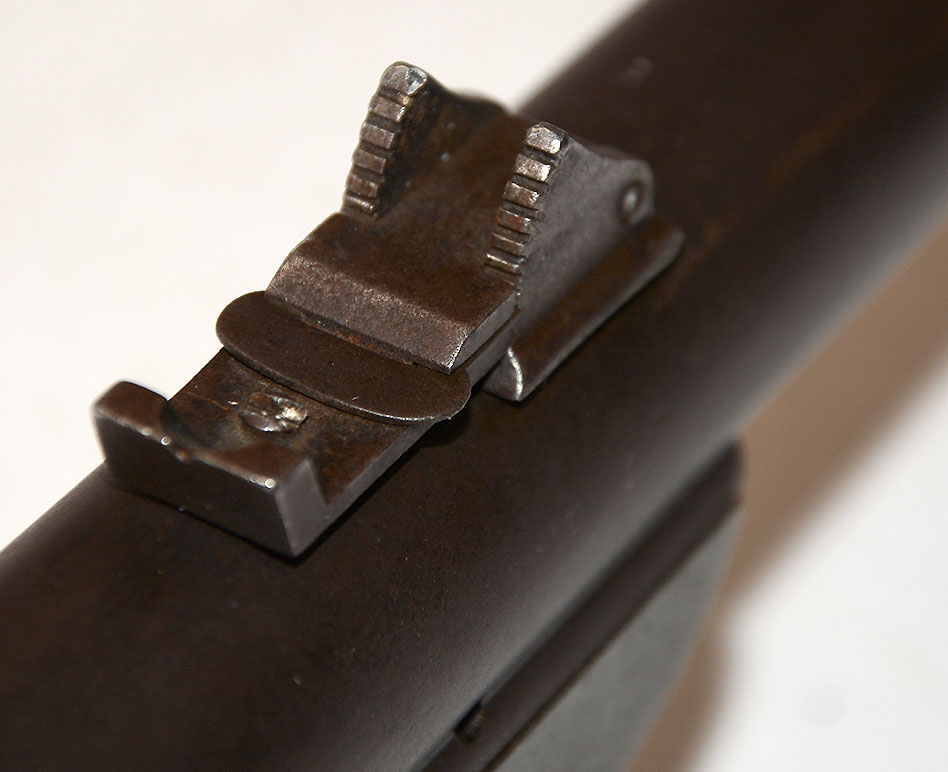
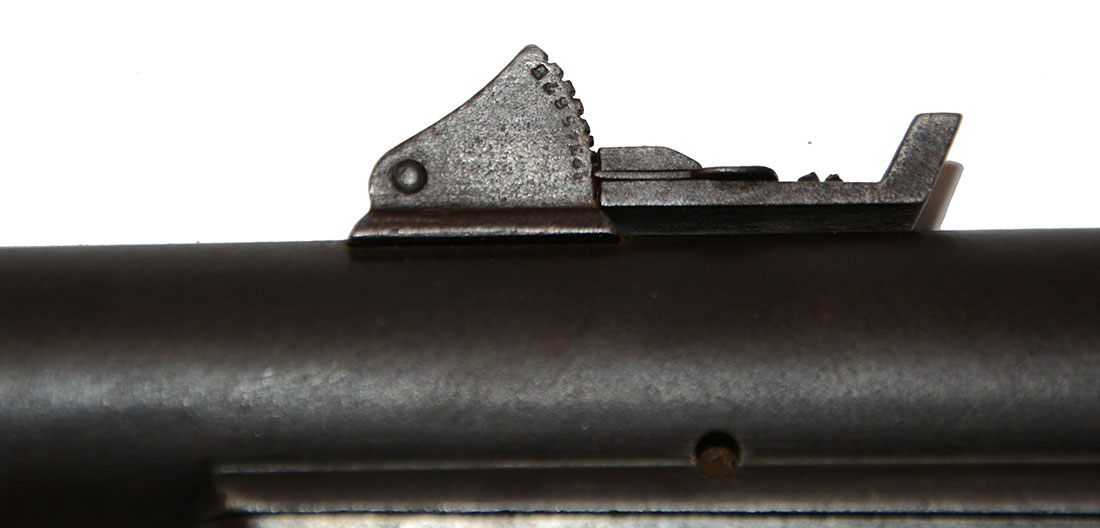
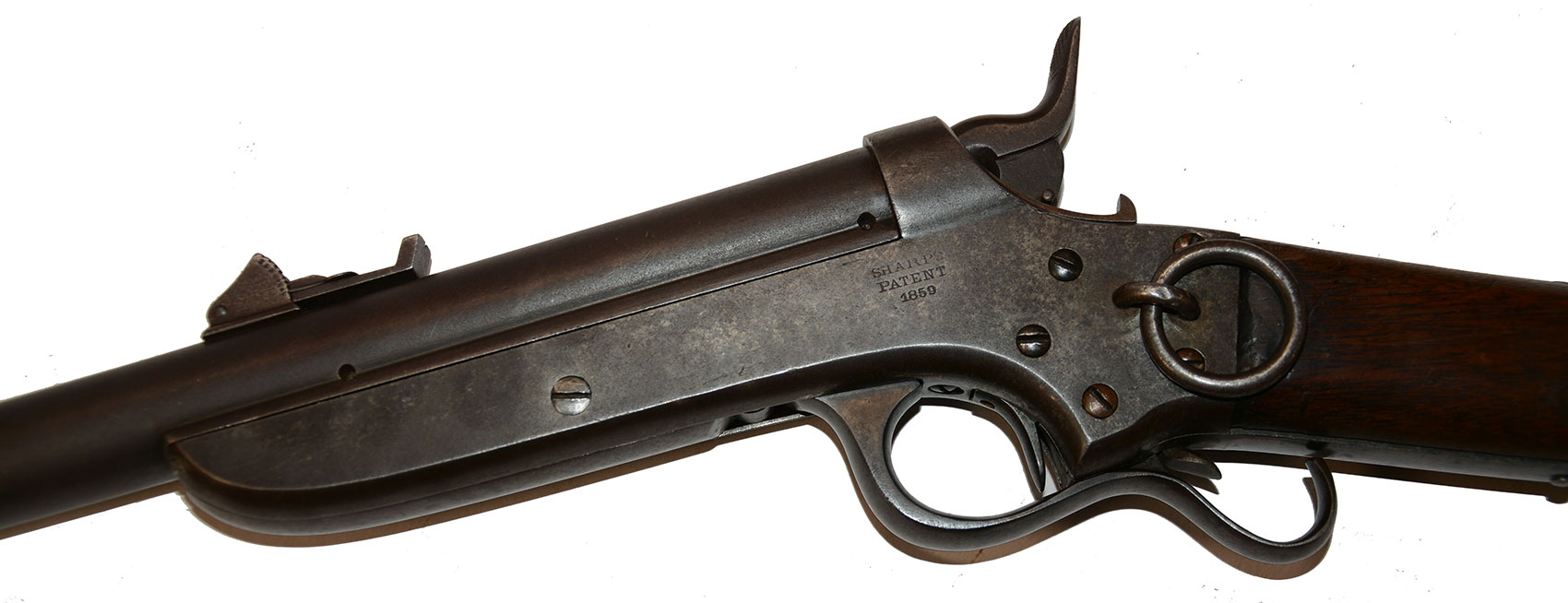
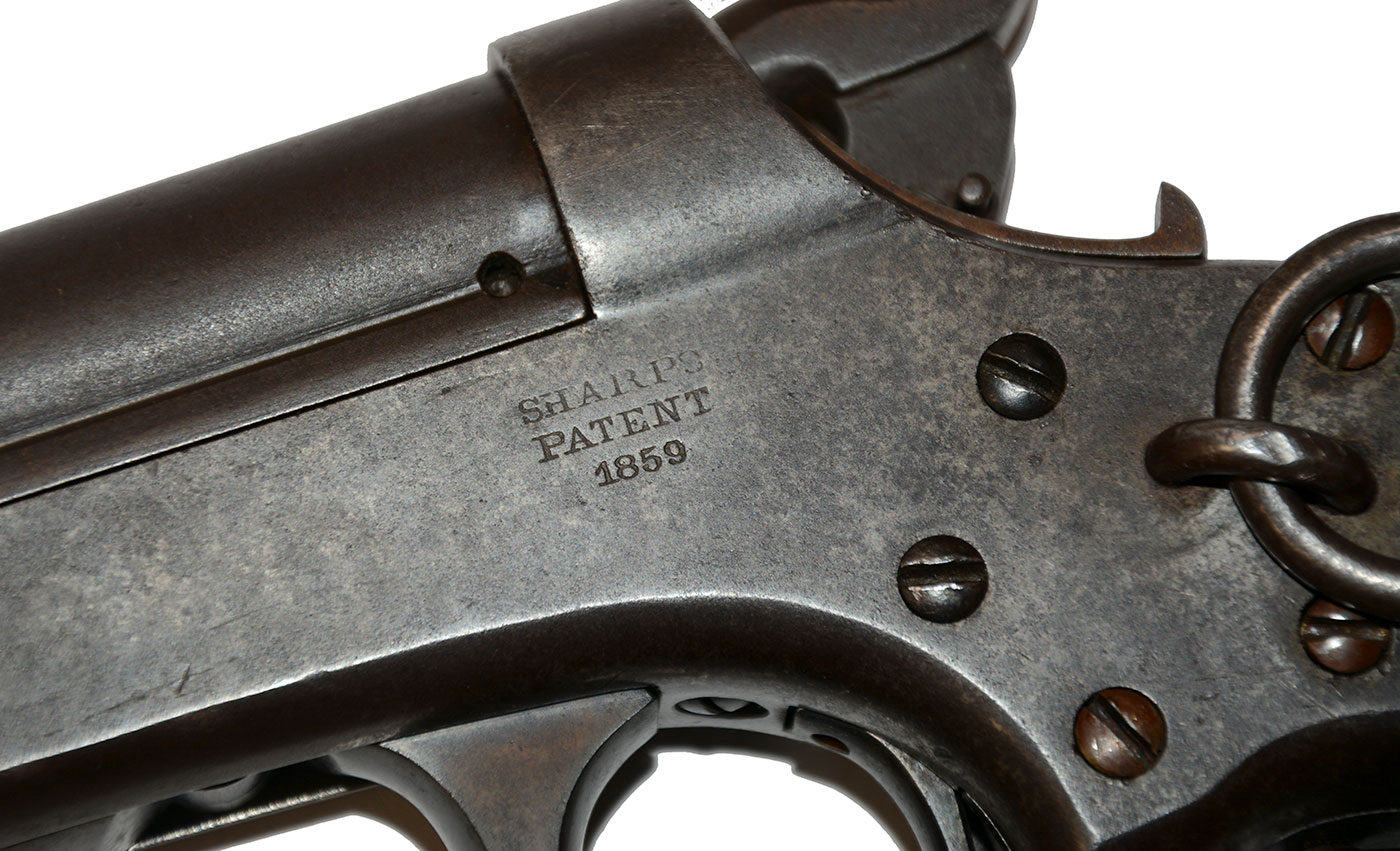
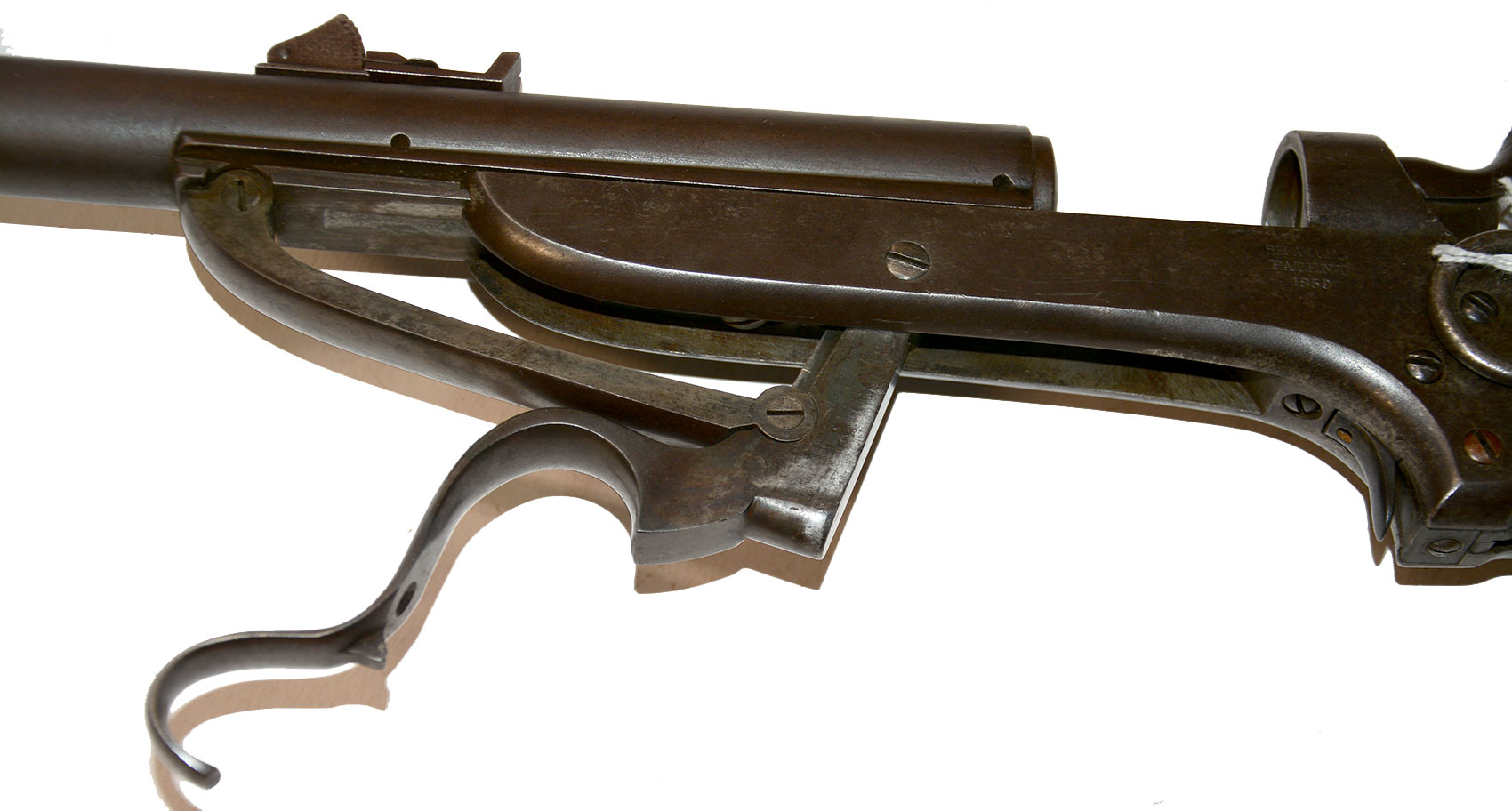
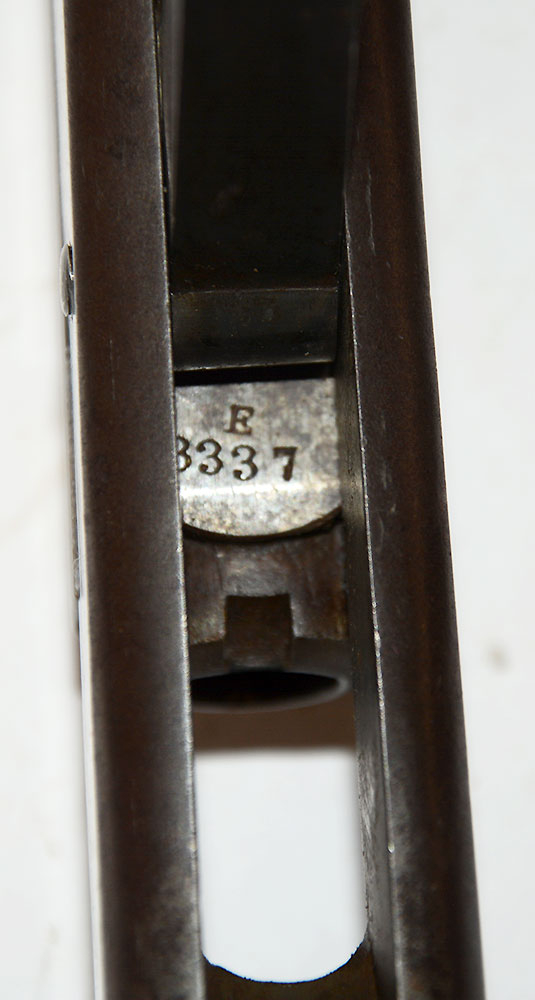
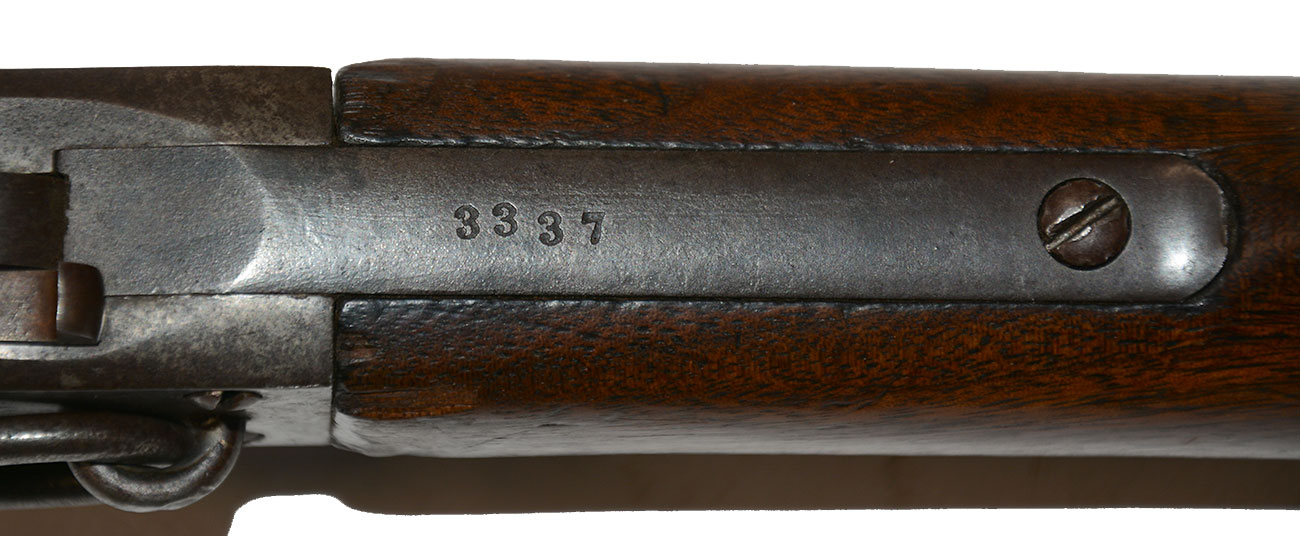
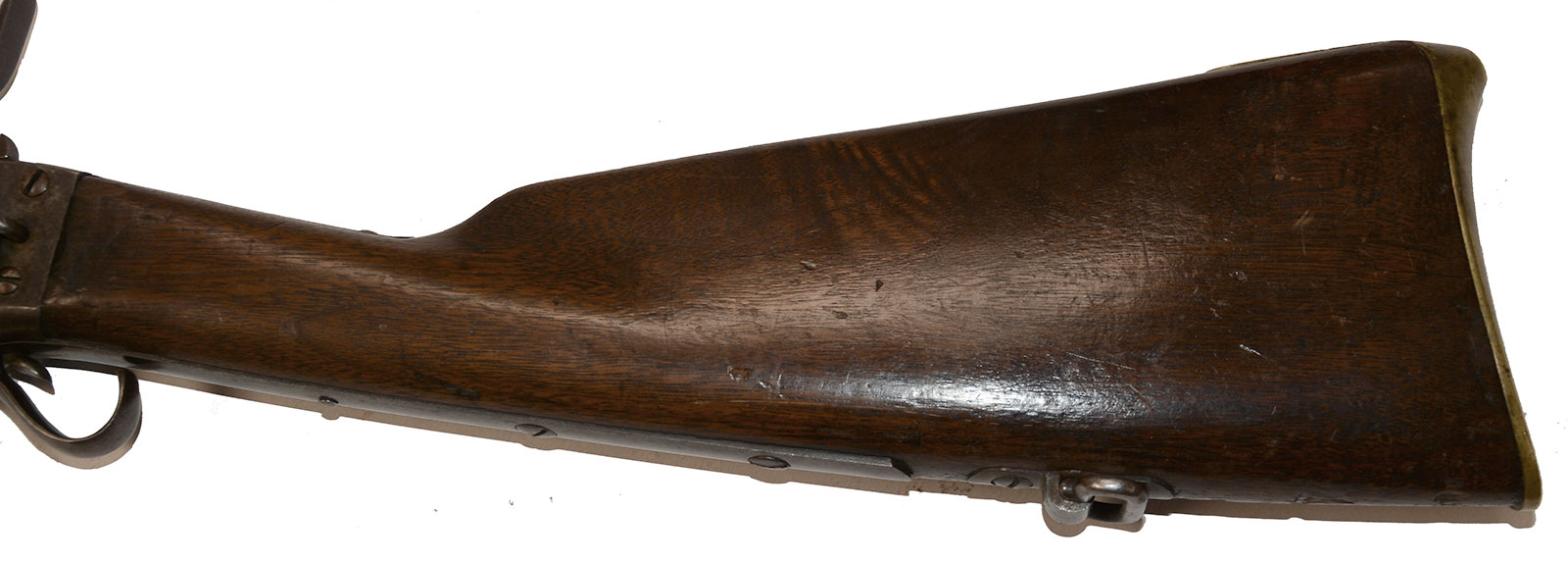

$3,500.00 SOLD
Quantity Available: None
Item Code: 1236-02
This scarce 19-inch barrel Sharps and Hankins cavalry carbine, serial #3337, is listed in the descriptive book of Company A, 3rd NY Cavalry, as belonging to Charles W. Emerson, who served as private, corporal, company quartermaster sergeant, first sergeant and regimental sergeant major, with later service as an officer in the 23rd NY Cavalry and 1st U.S. Colored Cavalry. Forty-eight serial numbers of carbines carried by men in the company were recorded no later than March 1863, and likely reflect issues made in late 1862. These have been published in Coates and McAulay’s book on CW Sharps Carbines & Rifles and we include with this carbine Emerson’s service and pension records, along with photocopies of the actual descriptive book entry. This is a scarce variation of the Sharps and Hankins that merits a place in a Civil War arms collection, general cavalry display, one focusing on the 3rd NY Cavalry, or even a specialized Sharps collection.
Emerson’s carbine rates very good for condition, complete, all original, with good surface and color to the metal and wood, and sharp markings including serial number 3337 on the receiver tang. All metal is smooth. The barrel has full coverage of blue turned plum. Both sights are in place. The rear sight is the Sharps tangent style with single long leaf having a notched block at the rear and pivoting forward with the range graduated from 100 to 1800 yards on the side of the pivot housing. The sight shows some thin blue shading to brown on the rear with the front a bit more gray. The receiver and lever show a subdued mottled thin bluish gray and light gray from faded case colors. Some of the screws show thin blue. The hammer shows as a faded blue. The markings on the receiver are sharp: “SHARPS / & / HANKINS / PHILADA” on the right and “SHARPS / PATENT / 1859” on the left. The sling ring and staple are in place on the left and show a bit brighter. The lever shows mostly as a mellow faded blue and the upper and lower tangs, and the sling swivel somewhat darker.
The buttstock shows scratches and handling marks, no cracks, breaks or repairs, mostly a warm brown in color with some darker stains. The left wrist shows some dark stains and dings from the sling ring, which itself shows some dings, hiding any cartouche. On the right wrist there is minor shallow chipping, worn smooth from use, likely from recoil in firing. The is one shallow check on the top of the comb and a couple of dings on the underside of the butt between the base of the sling swivel and the buttplate, indicating the carbine may have been carried on the early shoulder sling at one point as well as a standard carbine sling (likely later.) The action is very good. The bore is great, with very good rifling and just minor peppering, and would clean to bright.
Christian Sharps left the Sharps Rifle Manufacturing Company in 1853, moved to Philadelphia, and started a new company that in 1858 became C. Sharps & Company. William Hankins joined the firm in 1860 as superintendent of the rifle works and became a full partner in 1862, with the firm renamed Sharps & Hankins in 1863. The company produced both rifles and carbines using a .52-56 rimfire cartridge and an action using a lever release catch permitting the lever/triggerguard to be lowered, sliding the barrel forward to insert the cartridge. The First Model utilized a firing pin mounted on the hammer; the improved second model (aka the 1862) has the firing pin in the receiver. The guns also featured a hammer safety to keep it from striking the pin and a spring-loaded extractor.
The Navy purchased 6,986 carbines and about 600 rifles. The Army purchased 3,486 carbines according to Sellers, or just 1,486 according to McAulay, usually omitting the leather barrel cover used by the navy, but fitted for the same sling running through a sling swivel on the butt and buckling around the barrel, which did not have a forearm, and used the same 24” barrel. An estimated 500 carbines with this 19” barrel also made their way into army hands, but apparently by a New York State purchase rather than by U.S. government purchase (McAulay.) Sellers places them in the 3,000 – 4,000 serial number range, estimates them at 500 in number, and says explicitly they were, “specially ordered for the 3rd New York Cavalry” (p.173.) These guns are Second Models and numbered too high to be in the US Army’s first purchase of 250 carbines, ordered in July 1862 and delivered in September 1862, and in the 3rd NY Cavalry records show up too early be among the Army’s second purchase, ordered in November 1863. Emerson’s carbine is #3337, one of eight in the 3,000 range on the company list, fitting Sellers’ serial number range. Most of the 48 guns on the roll are in the 2,000 range, and one of these, illustrated by McAulay clearly has a 24-inch barrel, indicating both barrel lengths were in the purchase, and likely confirms Sellers’ range for the 19” version.
Carbines on the 3rd NY list were issued no later than March 1863 (the date of death of one of them men listed with a carbine,) and most likely in late 1862 (McAulay.) They seem clearly to have been manufactured with an eye toward an Army contract for cavalry carbines given the shorter barrel and use of a sling ring and staple on the receiver. But, the company received no further contract from the Army for a year, likely explaining the availability of 500 more of these 19” barrel versions with sling rings offered to the Navy in July 1863, accepted, and issued in early 1864, apparently falling in the 6,000 number range.
Charles W. Emerson was born in Maine in 1840, and working as a clerk in Rochester, NY, when he enlisted on July 13, 1861, in what would become Company A of the 3rd NY Cavalry. Companies were sent south individually as quickly as mustered and Company A was the first, mustering in July 17. Emerson supplied his own horse, which was not unusual in very early war volunteer regiments even in the north. The companies were assigned to two different divisions and only united at Washington in March 1862, to be sent to the Department of North Carolina in April, where the regiment joined the 18th Corps and operated in the tidewater region of North Carolina and Virginia, seeing very active service regularly on patrols, expeditions, and raids, and in small unit actions. Indeed, Phisterer lists 75 different occasions from Oct. 21, 1861, to June 2, 1863, the period of Emerson’s service with the regiment, in which elements of the regiment or the regiment as a whole saw some kind of action, 70 of which occurred in North Carolina, and 47 after December 1, an approximate date for issue of the carbines.
The regiment was initially armed only with saber and pistol. Burnside, head of the Department, requested carbines for them in late June 1862 and they had at least some (Burnsides and Sharps) when attacked at Washington, NC, on Sept. 6. The state purchase of Sharps and Hankins carbines was likely made to supplement these. McAulay mentions two fights in particular where Company A and the use of carbines were mentioned in official reports: a fight with members of the 22nd SC Infantry near Kinston, NC, on December 12 and in March 1863 when Company A, with another cavalry company and three companies of infantry, attacked the camp of the 45th NC infantry about twelve miles from Kinston. (McAulay 2006.)
Emerson was with the regiment at the time of all three engagements, though his record had ups and downs. He was promoted to corporal early on and to company Quartermaster Sergeant on Sept. 1, 1861, but in November was involved in a squabble with a Lieutenant that resulted in being reduced to the ranks, court-martialed, and sentenced to six-months hard labor and forfeiture of pay. The hard-labor was apparently performed in camp as a private - he is listed as present on the muster rolls- and by July 1862 is again the Quartermaster Sergeant for the company, and sometimes listed as Commissary Sergeant, perhaps because his duties involved forage for the horses. In any case, he was promoted First Sergeant January 3, 1863, and then regimental Sergeant Major on January 15, so he appears to have mended his ways, so much so that he was recommended for promotion to 1st Lieutenant to serve with a new regiment of NY cavalry being raised by Lt. Col. J.H. Mix of the 3rd NY Cavalry. He was discharged at Newbern from the 3rd to accept the appointment on June 14, 1863, with the carbine then likely passing to another member of regiment, which continued to see very active service.
Emerson’s subsequent career, military and civilian had is ups and downs. He mustered into the new cavalry regiment, designated the 23rd NY Cavalry as 1st Lieutenant of Co. A the day after discharge from the 3rd, but the regiment ended up with only two companies, who served off and on with the 12th NY Cavalry, also in North Carolina. They are credited with five actions in 1863, all in July, during which time he was with the unit. On December 13, 1864, he was mustered out of the 23rd, this time accept promotion to Captain in the 1st US Colored Cavalry, largely officered by men from the 3rd NY. This unit, too, served in the Department of Virginia and North Carolina and then as part of the 18th Corps in Butler’s operations against Richmond and Petersburg south of the James, fighting at Swift Creek, Fort Darling, Drury’s Bluff, Bermuda Hundred, Baylor’s Farm, and attacks on Petersburg, at the end of the war being transferred to the 25th Corps and ending its service in Texas, where Emerson mustered out February 4, 1866, though only after having been arrested and again court-martialed- a fitting bookend to his military career. He returned to work as a clerk, married in Maine in 1866, had two daughters, and then seems to have thought better of it, leaving his wife and two daughters behind to move to New York City, where he married again under an assumed name in 1873, fathered another daughter in 1874, married his second wife again in 1886 when she found out his real name, and then somehow convinced her to go through a marriage ceremony a third time when they were living in New Jersey in 1896 and he was working for the Pennsylvania Railroad. She only discovered after his death in 1905 that he had been previously married, and the motive for the third marriage was likely that his first wife had only divorced him in 1894. Needless to say, there were problems in filing for a pension and she was supported for the rest of her life by their daughter, who became a prominent violinist, in fact playing for her father on his deathbed by his request. His obituary commented on his committed atheism, and devotion to family.
Sharps and Hankins carbines are known to have been carried also in the 9th, 10th and 11th NY Cavalry. It is something of a misnomer that these short versions have been nicknamed “11th New York Cavalry Carbines” by some collectors. They would perhaps be better titled 3rd New York Cavalry Carbines. [sr] [ph:L]
DISCLAIMER: All firearms are sold as collector's items only - we do not accept responsibility as to the shooting safety or reliability of any antique firearm. All firearms are described as accurately as possible, given the restraints of a catalog listing length. We want satisfied customers & often "under" describe the weapons. Any city or state regulations regarding owning antique firearms are the responsibility of the purchaser. All firearms are "mechanically perfect" unless noted, but again, are NOT warranted as safe to fire!
~~~~~~~~~~~~~~~~~~~~~~~~~~~~~~~~~~~
THIS ITEM, AS WITH ALL OTHER ITEMS AVAILABLE ON OUR WEB SITE,
MAY BE PURCHASED THROUGH OUR LAYAWAY PROGRAM.
CLICK HERE FOR OUR POLICIES AND TERMS.
THANK YOU!
Inquire About IDENTIFIED 3rd NEW YORK CAVALRY SHARPS AND HANKINS CAVALRY MODEL CARBINE
Most Popular
Historical Firearms Stolen From The National Civil War Museum In Harrisburg, Pa »
Theft From Gravesite Of Gen. John Reynolds »
Selection Of Unframed Prints By Don Troiani »
Fine Condition Brass Infantry Bugle Insignia »
British Imported, Confederate Used Bayonet »
Scarce New Model 1865 Sharps Still In Percussion Near Factory New »
featured item
CIVIL WAR MASSACHUSETTS 1864 PRESENTATION GERMAN SILVER BUGLE
This is an untouched Civil War German Silver double-twist bugle with mouthpiece in place, in very good condition, standing 10-3/4” tall with a 4-1/8” diameter bell fitted with a matching floating garland carrying a simple incised border line. The… (1273-06). Learn More »


